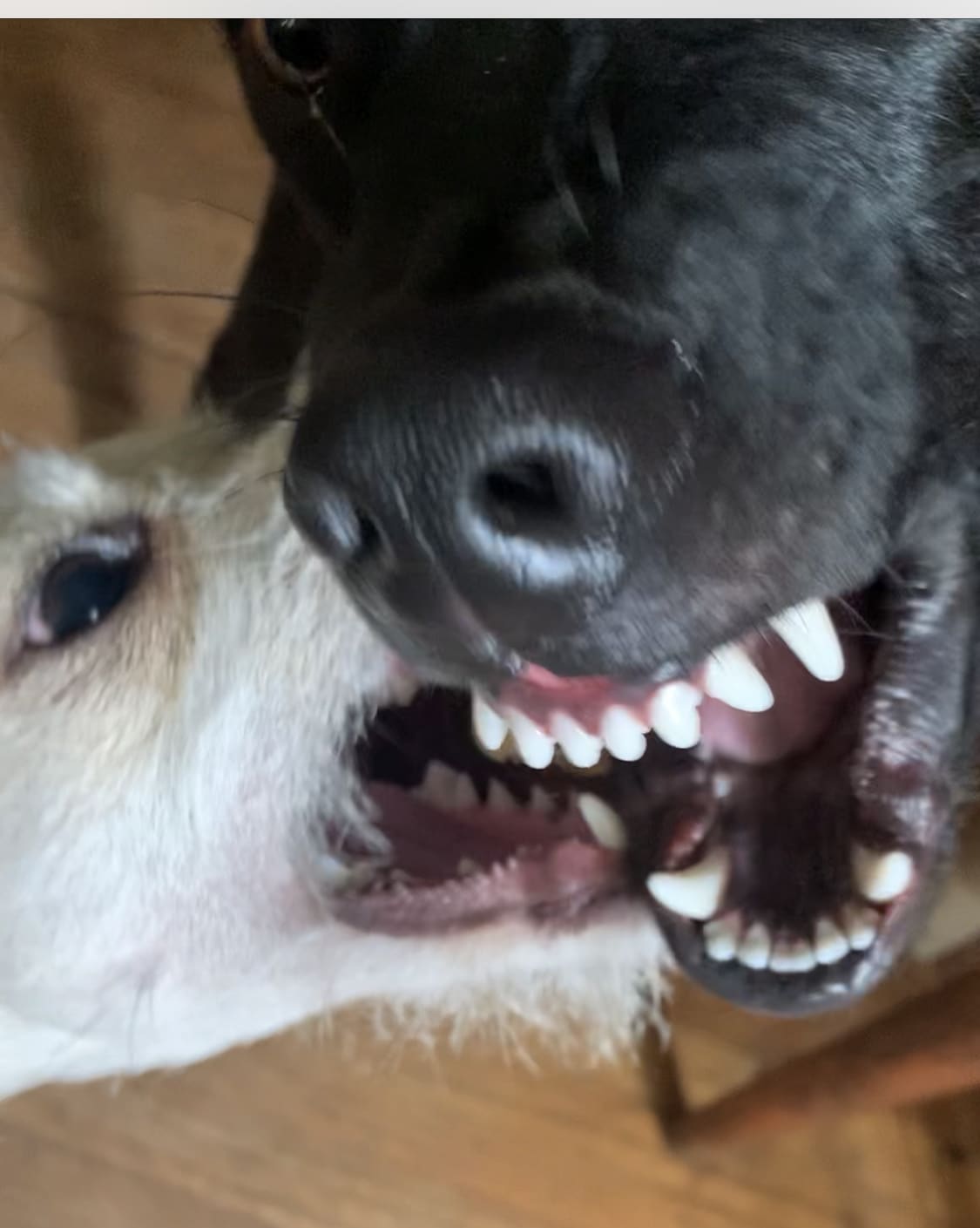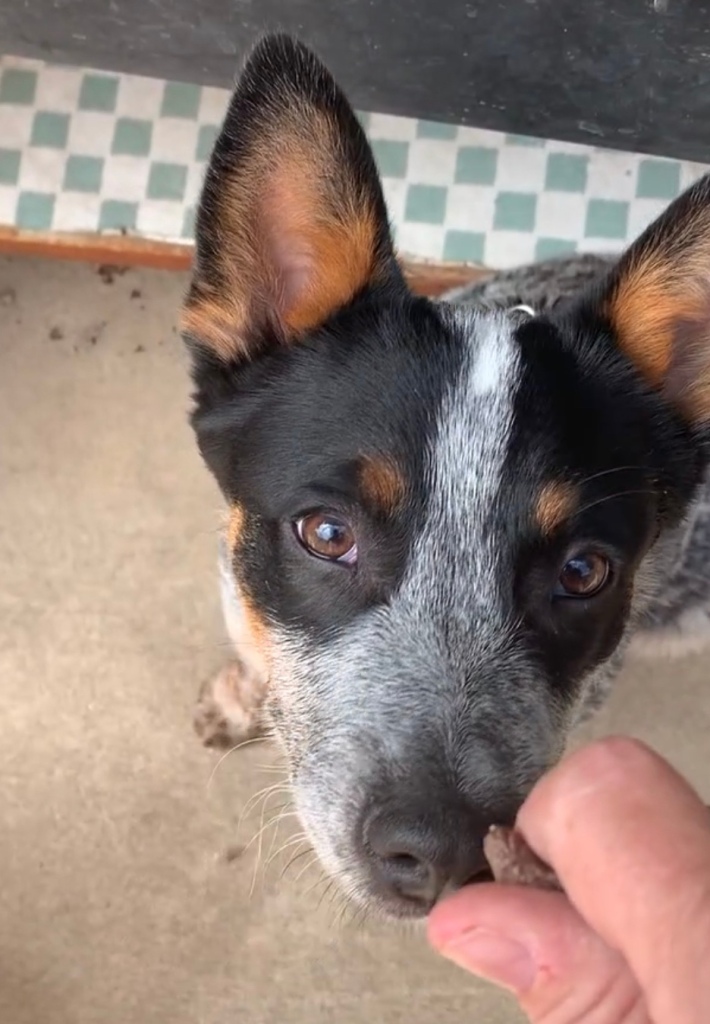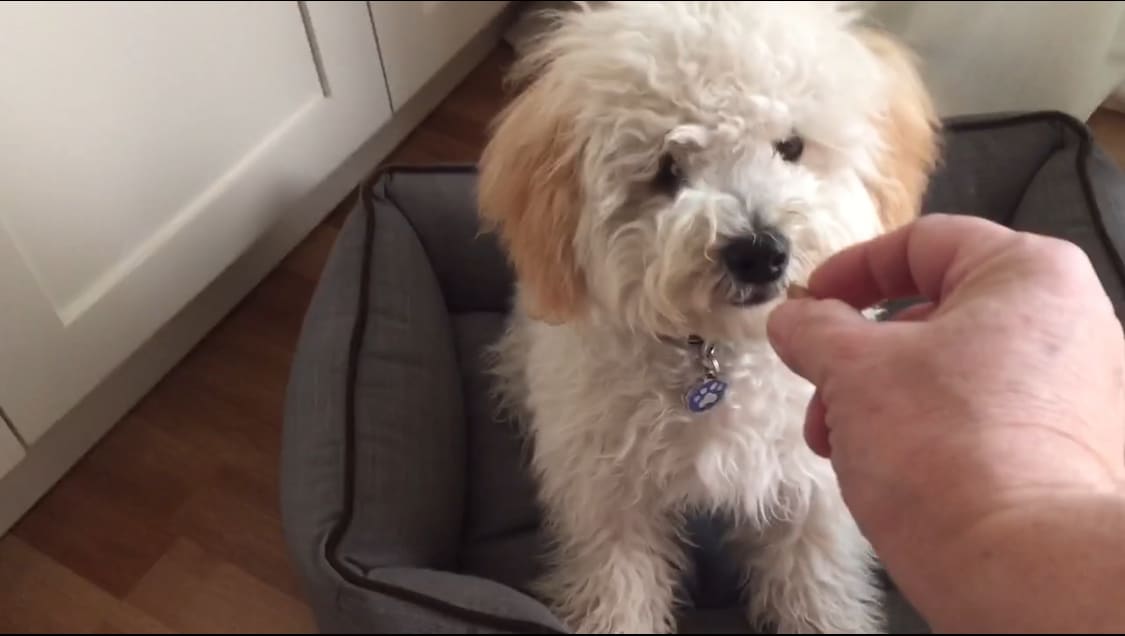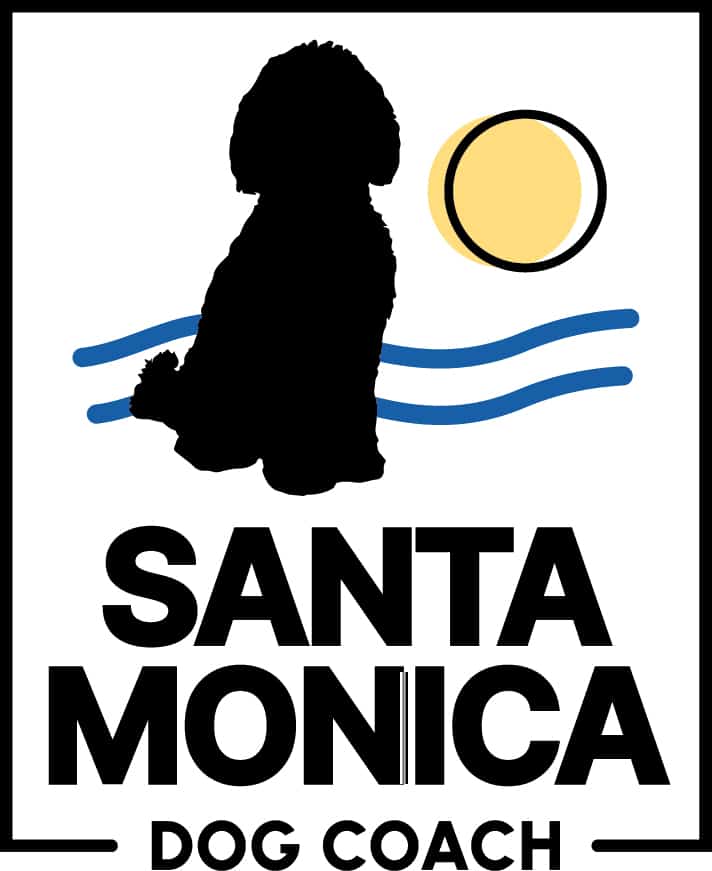Do you regularly play with knives? Stick your hand in a running blender or mixer?
I don’t, and I no longer stick my hand in a set of carnivore teeth (read: meat/flesh puncturing & shredding machine).

I’ve taken chicken wings/shoes/delicate objects from dogs on more occasions than I can count. That’s before I knew the potential damage I could be doing to my hand, and to my relationship with my dog.
Today I’ll only take something from a dog if I feel they’re in imminent, life-threatening danger, and I have nothing of value to trade.
It’s not “dog like” to pick a fight over every morsel, in every situation, and it’s a huge drain on dog-dog and dog-human relationships.
If the item represents an imminent threat to health or safety, I’ll commit to retrieving the item, no matter what, but I’ll only “take” things from a dog after every possible cooperative option has been exhausted.
When I’m within reaching distance, I freeze. I then offer the dog a high-value reward.
I’m not likely to get a ribeye from a dog in exchange for a dog biscuit (dogs aren’t stupid), it’s all about the value of what I’m offering, followed by the way I offer it, and my willingness to be as patient as the dog is determined.
To pique the dog’s interest, I hold my high-value treat in their line of sight, then move it around their field of vision, before placing it within their reach (after they’ve released their prize).

Canine eyesight is triggered by movement. Things that move, especially in short directional bursts (up, down, left, right, in-sight, out-of-sight), are far more interesting than stationary objects, to most dogs. For many, the thrill of the chase is enough to open their mouths & release whatever they have, so they can focus on whatever you have.
To hone your dog’s focus on the act of dropping something in exchange for receiving something, avoid speaking to your dog.
Walk towards them silently, and offer the treat silently.
Save verbal rewards until after your dog has the high-value treat in their mouth, and you have their former prize in your hand.
After the dog has dropped something a few times, in exchange for your trade, begin to say “drop it” as whatever you’re trading for falls from their mouth.
To make a mutually beneficial trade, be honest about the value of the trade to your relationship. There are times when a dog has appropriated a poorly placed item, or snagged a bit of errant food that I’ve allowed them to keep, rather than engage in a battle of wills.
If I’m not near the dog, or if whatever they have is mostly consumed or destroyed by the time I arrive, I think twice before reacting at all.
I wait until I’m closer, calmer, have something to trade, or I walk away and chalk it up to human error. I left something where I shouldn’t have, dropped something, forgot to close the pantry door… Stuff happens.
Unless my dog’s in danger from what’s in their mouth, it’s never worth the risk of damaging our relationship, making my dog reluctant to cooperate with me, or fearful of my voice or presence.
Trading with a dog consistently creates brain synapses between having something foreign in their mouths, your approach, and a high-value reward.
Yelling at a dog, running at them hands out, grabbing for their mouths or trying to intimidate them into doing what we’re demanding will teach your puppy or dog to run, hide and avoid you, when they have something in their mouth.
With puppies there’s lot of opportunity to practice this new behavior. They put everything in their mouths.
With adults, it can take a month or more of random occurrences, or you can intentionally set the environment up for training purposes.
If there’s an object your dog is mouthing that you want them to avoid, leave it out at a time when you have high-value treats in your pocket or a stocked treat station nearby. Walk past the object (ignore it, and your dog), away from your dog. If your dog grabs it, start the exercise.
Walk calmly towards your dog.
Make eye contact, but don’t speak to them.
Hold the high value treat in front of you, between the thumb and index fingers, so it’s clearly visible to your dog.

Be patient! Your dog may look at you, then look at the treat but not open their mouth for up to a minute, in the beginning. Once they understand this “game” they’ll drop what they have much faster, provided the treat is worth it (to your dog). I only use freeze-dried meat treats for this reason.
As soon as your dog opens their mouth, give them the treat while simultaneously retrieving the now dropped object with your free hand.
Immediately pick up their discarded treasure and walk away.
Mission accomplished without force, fear or coercion.
Dee Green has been a professional dog trainer and canine behavior consultant for more than 20 years. She specializes in puppies up to 18 months, and fearful, anxious and reactive dogs of all ages.
©️Dee Green, 2023
